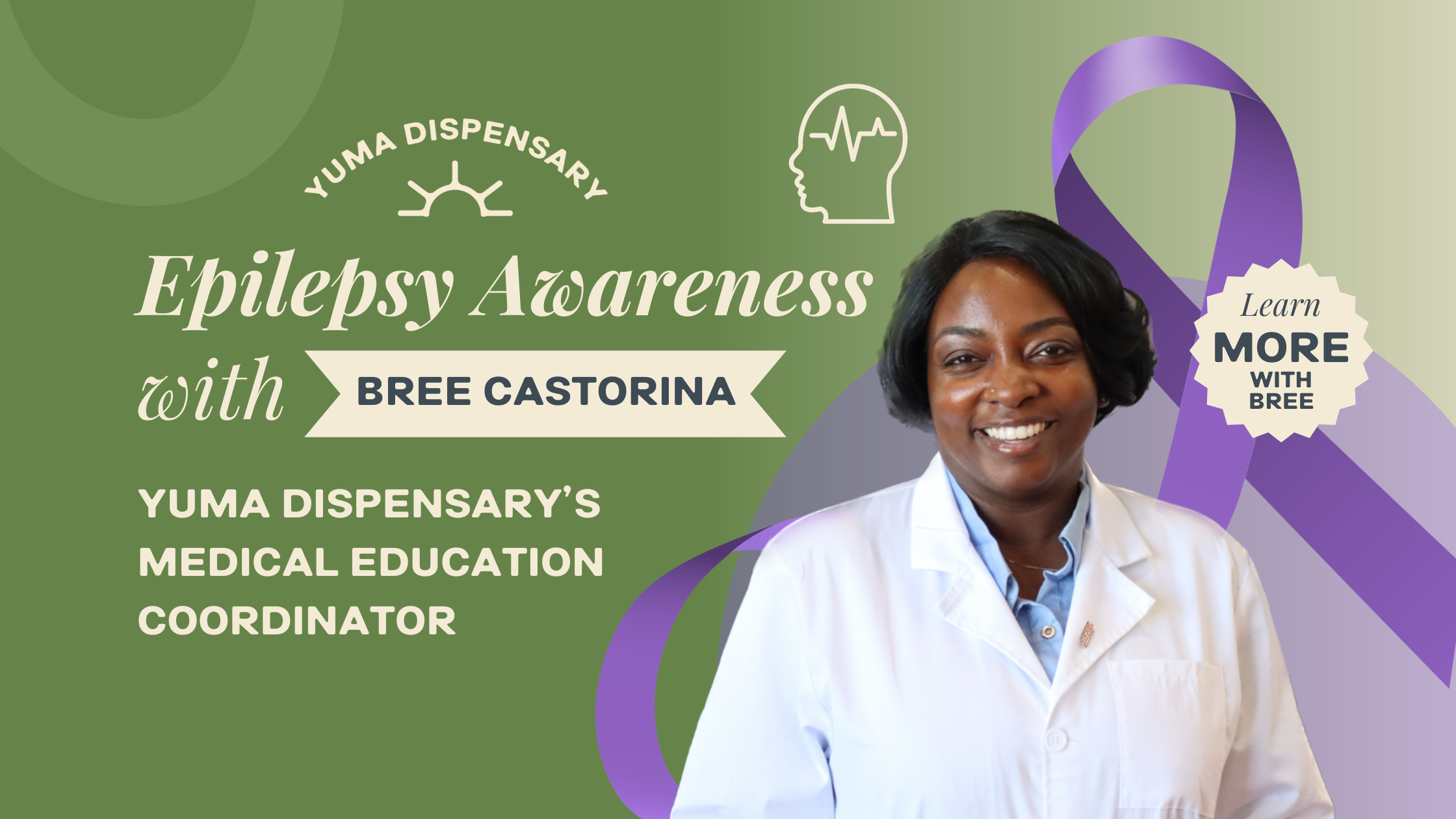
Approximately 77,000 of the 3.4 million people with active epilepsy in the US reside in Arizona5.
November marks Epilepsy Awareness Month, and we're delving into cannabis research to explore its potential in alleviating epilepsy symptoms. Before we delve into therapeutic aspects, let's establish a foundational understanding of epilepsy.
Epilepsy, a neurological condition characterized by recurrent, unprovoked seizures, is commonly associated with two or more seizures, a single episode lasting over five minutes, or multiple seizures without regaining consciousness in between. These seizures can be classified into three categories:
Generalized Onset: Impacts both sides of the brain, giving rise to diverse manifestations such as tonic-clonic, absence, and atonic seizures.
Focal Onset: Originating from a specific region in the brain, these seizures are classified as either "focal onset aware" or "focal onset impaired awareness" seizures.
Unknown Onset: Seizures manifest with an unexplained origin, occasionally unfolding without any witnesses.
Seizures vary in presentation, encompassing unique sensory and emotional episodes, along with physical symptoms like muscle stiffness, loss of consciousness, and rapid heartbeat. Given the diverse causes and triggers, ranging from genetic factors to environmental influences, effective management of epilepsy is crucial.
Conventional treatments include anti-seizure medications, surgical interventions, neurostimulation devices, and dietary therapies like the ketogenic1, low glycemic index2, modified Atkins3, and medium-chain triglyceride (MCT) ketogenic diet4. These strategies aim to manage seizures effectively and improve patients' quality of life.
Epilepsy, a complex condition, prompts the question: What's the latest on cannabis as a treatment? While you may have encountered discussions on cannabis and epilepsy, let's embark on a comprehensive exploration of this intriguing subject. Below, we provide explanations for potential cannabis therapies designed to alleviate symptoms associated with epilepsy:
Epidiolex, an FDA-approved medication, offers promise and significant potential for patients dealing with Lennox-Gastaut Syndrome and Dravet Syndrome. For those aged 2 years or older with seizures related to these conditions, Epidiolex may provide substantial improvements in their treatment with a doctor's supervision.
CBD stands out as a valuable cannabinoid for epilepsy management. Its key benefit lies in its ability to combat seizures, as demonstrated by a study that reported a decrease in seizure frequency by over 40%. Though the exact way it achieves this remains somewhat elusive, there's promising evidence that CBD may synergize with other seizure medications to enhance their effects.
THC's impact on epilepsy is dosage-dependent. Modest quantities hold promise in controlling seizures, yet higher doses, as suggested by animal studies, could potentially exacerbate seizures due to their direct influence on CB1 receptors.
Cannabinoids such as CBDV, THCV, and CBG exhibit[1] [2] [MO3] potential in reducing seizures based on studies. However, further research is needed for confirmation.
The most effective chemotype for epilepsy is Type III, with high CBD and low THC content. The majority of recent studies support this choice, consistently showing positive therapeutic results.
Linalool- A terpene that has recently garnered attention for its anticonvulsant properties, demonstrating potential in the management of epilepsy.
Limonene- A terpene that indirectly aids by regulating receptors and neural messengers within the nervous system, offering anti-inflammatory and neuroprotective effects.
Is a terpene that has also exhibited anticonvulsant properties, as highlighted in a study stating, "Treatment with β-caryophyllene attenuates seizure activity induced by administration of this excitotoxin." In simpler terms, it can aid in reducing seizures triggered by hyperactive nerve cells.
Cannabis, encompassing compounds like CBD, has demonstrated its effectiveness in the management of epilepsy. As ongoing research enriches our comprehension, the current insights are notably optimistic. Collaborative efforts among patients, healthcare professionals, and researchers are essential to harness its full potential.
With growing acceptance and continuous studies, cannabis is increasingly becoming a prominent component in epilepsy care. Dialogues surrounding cannabis and epilepsy might spark curiosity regarding its potential broader applications, igniting a pathway for further exploration. In this promising trajectory, the future of cannabis in healthcare holds immense potential.
The information provided in this online article is intended for general informational purposes only. While we diligently strive to ensure the accuracy and reliability of the information presented, it is not a replacement for professional advice. The content may draw upon findings from various research sources, yet it should not be the sole basis for making significant decisions. We strongly encourage our readers to independently verify any information and seek expert guidance when necessary.
We want to clarify that we do not endorse or assert the accuracy or appropriateness of the information contained within the sources cited in this online article. Any reliance you place on such information is done so at your own discretion and risk.
Our commitment is to maintain the information’s currency and correctness. However, we make no guarantees or warranties of any kind, whether express or implied, regarding the completeness, accuracy, reliability, suitability, or availability of the content contained within the article, its associated products, services, or related graphics, for any particular purpose.
Under no circumstances will we be held liable for any loss or damage, including but not limited to indirect, consequential, or any other kind of loss or damage, arising from data loss or profit loss, stemming from the use of this online article. Your use of this article signifies your acknowledgment and acceptance of these terms.
Citations